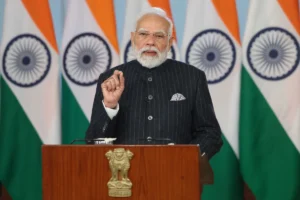
Is the Chinese balloon a global baloney?
Kids aren’t the only ones who fight over balloons. Sometimes, superpowers also engage in verbal battles over them. The world recently witnessed a heated argument between the US and China over a balloon that the Pentagon believed was sent by Beijing for spying purposes. The Chinese authorities predictably denied the charge and claimed it was intended for weather research.
Despite this, the US army destroyed the balloon, leaving its true purpose still unknown. Neither party has revealed information about the instruments onboard the balloon, which is not surprising given the increasing mistrust between the two nations. As is often the case, the truth probably lies somewhere in between their claims and counter-claims.
Meanwhile, US agencies will use all available means to analyze the balloon’s debris to determine if it transmitted sensitive information to China. This analysis will also provide a rare look into China’s rapidly advancing surveillance capabilities. It’s possible that the balloon was programmed to self-destruct or scramble its stored data upon detection. The US investigators are also exploring the possibility that the Chinese used a ‘hybrid satellite network’ to send the data captured by the balloon back to China. This type of network uses high-altitude platforms to relay data to the nearest orbit-friendly satellite.
The US intelligence community should also question why the Chinese chose an outdated spying tactic that was once used by Japan’s Imperial Army to bomb the US during World War II. Balloons were popular surveillance tools for both superpowers during the Cold War. Even now, the US government is considering using high-altitude balloons to secure the Pentagon from aerial attacks. Although simple, balloons have many advantages as a spying device. They are far cheaper than satellites or drones can carry a good amount of equipment, and their slow speed and high-altitude capabilities make them difficult to detect.
Many analysts believe that there is more to the situation than what meets the eye. The controversy erupted on the heels of a highly anticipated visit by the US Secretary of State, Antony Blinken, to China, which had to be postponed. Did the Chinese have the intention of demonstrating their capabilities and willpower by taking the strategic rivalry to the US backyard with minimal risk? Was the straying of the balloon into the skies of Montana, which purportedly houses a US nuclear missile base, just a coincidence? How does one explain the detection of another balloon in US skies just three days after the first one was shot down? Were these alleged spy crafts meant to be detected to gauge the American reaction and send a message that China was capable of breaching US airspace?
Even if it was unintentional, the episode is likely to work in China’s favour. The US is sensitive to its security concerns across the globe, whether it’s in Afghanistan, Iraq, the Balkan region, or Ukraine. These concerns have only deepened in recent times due to the post-Covid economic slowdown, rising power prices, and persistent inflation. China has sought to capitalize on the situation by launching regular cyber attacks against the US. It was also able to escape US efforts to fix the responsibility of the global spread of Covid-19 on the Chinese authorities. The violation of US airspace without any consequences only weakens Uncle Sam’s position as the pre-eminent global power. This episode may convince many US citizens that the days when all of their country’s wars were waged in some distant corner of the world are over and that it can now come knocking on their doors.
The President Biden administration has sought to respond diplomatically to this rising threat, as evidenced by the cancellation of Blinken’s China tour. Secretary Blinken’s visit was supposed to be the highest level of bilateral engagement between the two nations in the last five years. It is now a missed opportunity for breaking the ice in bilateral ties. Many believe that President Biden had to cancel the visit due to domestic pressure.
The bigger threat here lies in the growing fragmentation of global communities. The US has already signaled the polarizing of the issue by alleging that it was not the only target of the balloon mission, reminding us of the widening cracks between the China-led coalition, consisting of countries like Russia and Iran, and the US-led faction, comprising most of the Western world and major Asian countries. The US administration claims that similar missions have been carried out in North and South America, Southeast Asia, East Asia, and Europe. According to some US media reports, China is conducting similar missions from its coastal Henan region to countries like Japan, India, Vietnam, Taiwan, and the Philippines.
It’s also worth noting that the US signed agreements with the Netherlands and Japan last month to limit China’s reach in semiconductor technology and recently reached an agreement with the Philippines to expand its military bases there.
China’s actions along the Line of Actual Control (LAC) have forced India to move closer to the western bloc, though it still maintains trade relations with China and continues to import cheap oil from Russia. However, New Delhi will face increased pressure to take sides as the US and China poles move further apart, adding responsibility to India to prevent global conflict.
The world appears to be returning to a state of great power rivalry, with nine declared nuclear powers instead of just five during the Cold War, making the danger of destruction even greater. We can only hope that all nuclear powers will act responsibly and that the shooting down of the Chinese balloon is an aberration in the world’s strategic affairs.



















